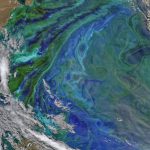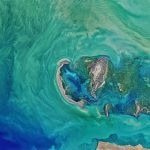 May 6, 2021 1:58 pm
Published by Climate Extremes
May 6, 2021 1:58 pm
Published by Climate Extremes
In this study, CLEX researchers aimed to evaluate the effect of different sources of data and the uncertainties in satellite data, by comparing the data with a ground-based radar product using both location-based and storm-based approaches.
 August 21, 2020 10:59 am
Published by Climate Extremes
August 21, 2020 10:59 am
Published by Climate Extremes
While the Extremes Rainfall RP has found itself in challenging times as a result of the COVID-19 pandemic, they have still found moments to celebrate and have been delighted by the enormous range of extraordinary research.
 August 3, 2020 4:48 pm
Published by Climate Extremes
August 3, 2020 4:48 pm
Published by Climate Extremes
CLEX researchers used real-world observations with satellite observations to calculate the quantity of nutrients carried into the Subantarctic Zone by mesoscale eddies. They found these eddies carried high nitrate and low silicate waters into the Subantarctic Zone.
 March 13, 2020 10:59 am
Published by Climate Extremes
March 13, 2020 10:59 am
Published by Climate Extremes
In this study, CLEX researchers and colleagues analysed the magnitude and sensitivity of vegetation responses to the Millennium Drought with satellite-derived information.
 July 8, 2019 2:56 pm
Published by Climate Extremes
July 8, 2019 2:56 pm
Published by Climate Extremes
The 21st Century has seen an increase in northwest cloudbands across Australia, according to a new dataset developed by CLEX researchers.
 March 6, 2019 4:23 pm
Published by Climate Extremes
March 6, 2019 4:23 pm
Published by Climate Extremes
New research suggests that the concept of maximum evaporation reported here is a natural attribute of an extensive wet evaporating surface. This provides a fundamental new insight as to how radiation, evaporation and temperature are interlinked.
 July 16, 2018 6:44 am
Published by Climate Extremes
July 16, 2018 6:44 am
Published by Climate Extremes
New research clearly demonstrates the potential to predict long-term LAI using simple ecohydrological theory. This approach could potentially be incorporated into existing terrestrial biosphere models and help improve predictions of LAI.







